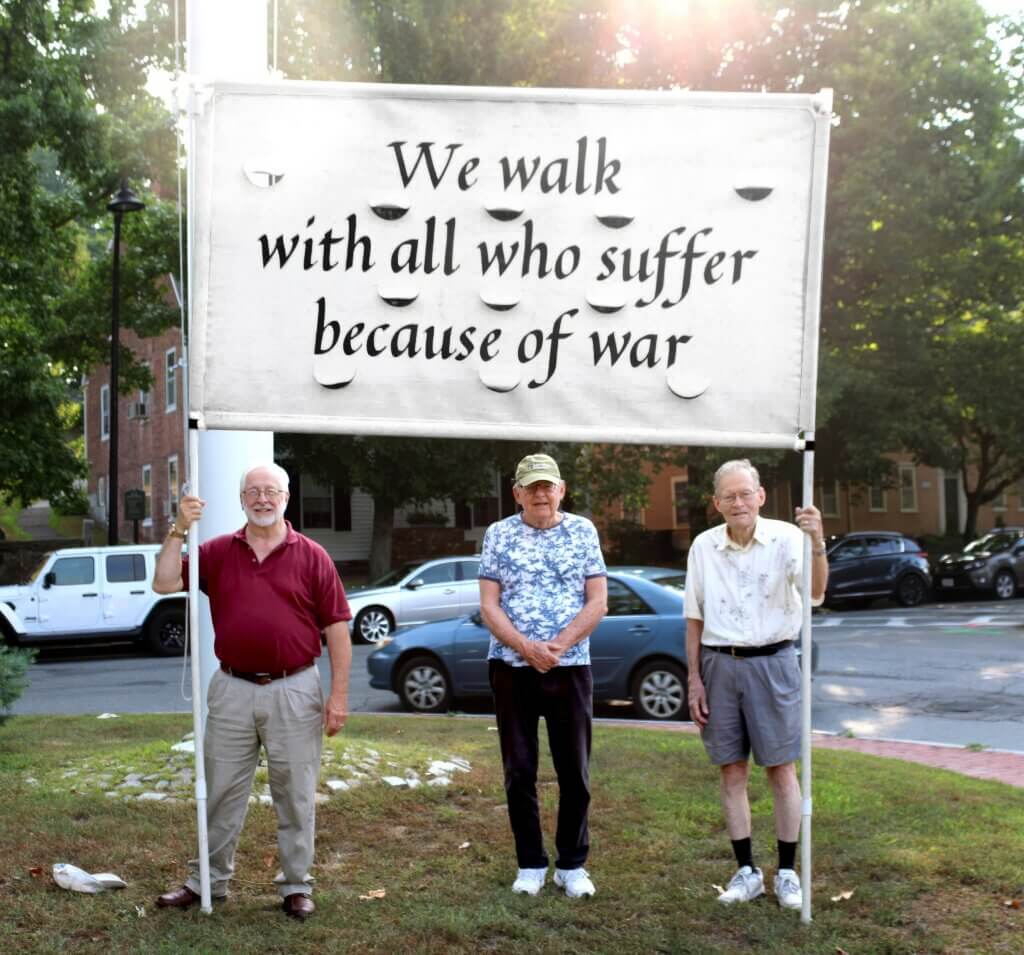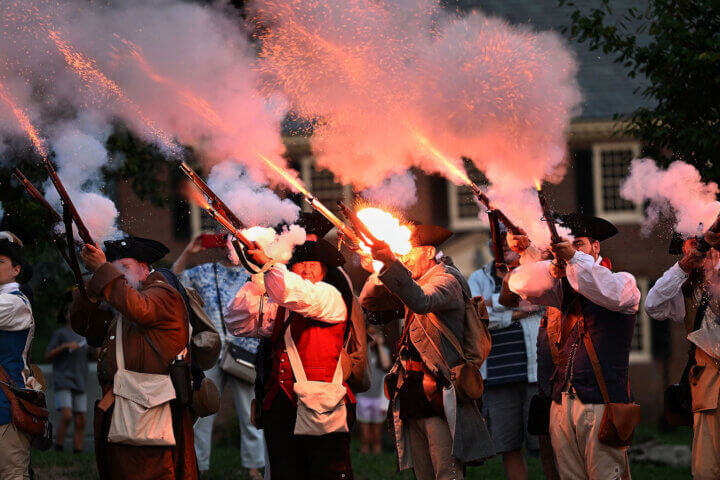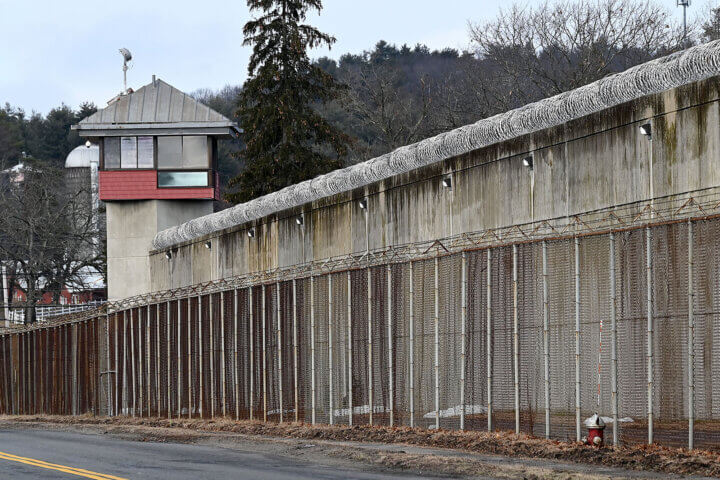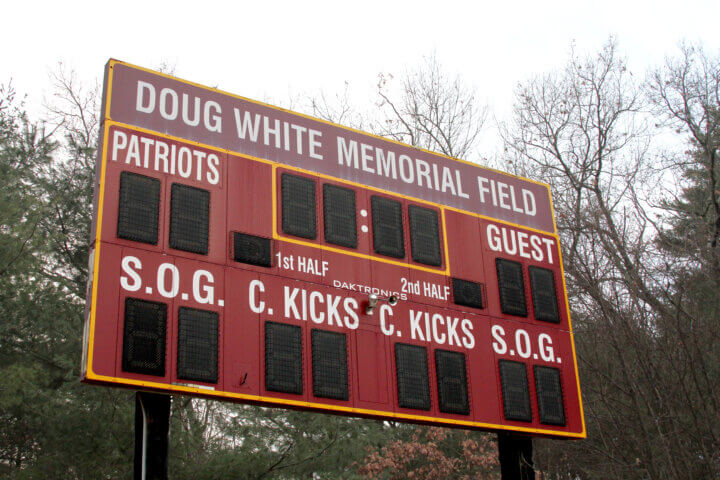By Ali Saunders — Correspondent
On Friday mornings, a small group of older men and women can be seen walking slowly around the town flagpole in Monument Square, bearing signs that plead for peace. Passersby might glance over and wonder who these activists are.
One Friday morning, I decided to find out.
I walked around town, trying to find the three men I had seen that day at the flagpole. I caught up with Edward Larner, Charles Phillips, and Paul Gaudet as they enjoyed breakfast at Main Streets Café.
It turns out the three have been part of the Concord Peace Vigil for as long as 32 years, each joining at a different time. They’re now part of the core group of 10 or so activists who take turns circling the flagpole.
Some drivers honk or wave in support of the walkers, though a few might yell something derogatory. But the activists don’t let that bother them, they say.
Participants avoid walking in snowy or icy weather but are otherwise maintaining the vigil from 8 to 9 a.m. on Fridays all year round. Afterward, they have breakfast at the café.
‘What we were doing … was wrong’

Larner, now a member of the Concord Housing Authority, lived in town when he was young and moved back after retirement. He participated in his first protest in England after college and recalled being moved by the power of a group of people advocating for a cause.
Soon after, Larner had to report for active duty in Vietnam. But first, he had to take courses in nuclear power, an experience that changed his life.
“After taking a week of what they called ‘chemical, biological, and nuclear weaponry,’ I just decided that what we were doing in Vietnam was wrong,” Larner said.
He felt he could not take an active part in the war — a decision that could result in his being charged. A colonel persuaded him to take his duty elsewhere to avoid punishment.
Larner served two years of active duty in Korea and later worked in Miami and Los Angeles, selling aviation insurance. He finished out his career by providing financial insurance to small businesses through a company called Paychex.
After that, he decided that for the rest of his life, he would advocate for peace.

Roots in the 1960s
Charles Phillips, a retired engineer, became a peace activist in the 1960s. A graduate of MIT, he went on to earn a master’s degree in engineering at Stanford. There, he realized that a peace movement was building all around him.
Nearly 65 years later, he continues to walk for peace.
Phillips had a long career as an engineer with the U.S. Department of Transportation’s Boston office. Before that, he spent the 1960s in Washington, D.C., and Los Angeles working for Rand Corp., a public policy research organization that aims to make at-risk communities around the world safer.
“We have a message that seems to resonate,” Phillips said of the vigil group, explaining that they walk not only for the casualties of war but for all who are affected by it and may be underappreciated or even forgotten.
Paul Gaudet is a retired elementary school music teacher from Lowell who saw many of his classmates drafted in the 1960s. He attended his first protest on Boston Common in 1968, and since then, he has been involved with groups working for social justice.
After his retirement, Gaudet assumed more of a leadership role in the peace vigil, becoming what he called the group’s “choirmaster.” Sometimes, the walkers sing while circling the flagpole or end their vigil with a song.

Working together
When asked about their goals as peace activists, the men said they simply hope their message reaches people. Larner said “the power of a community working together” can have an impact.
All three men were pleased to hear that their efforts were being noticed. They said they intend to continue holding their vigil — and to keep their message of peace alive.
Laurie O’Neill contributed reporting.






